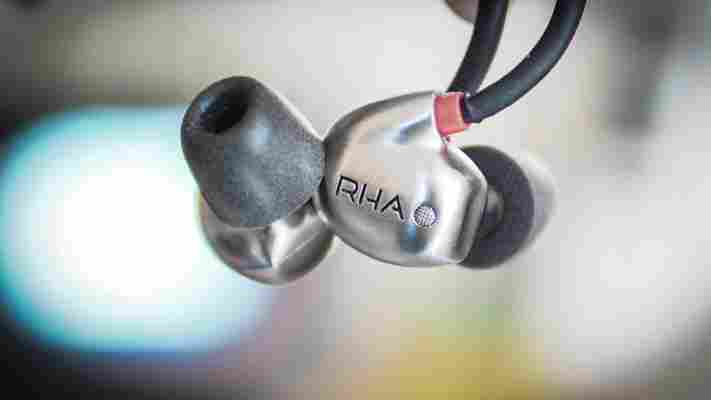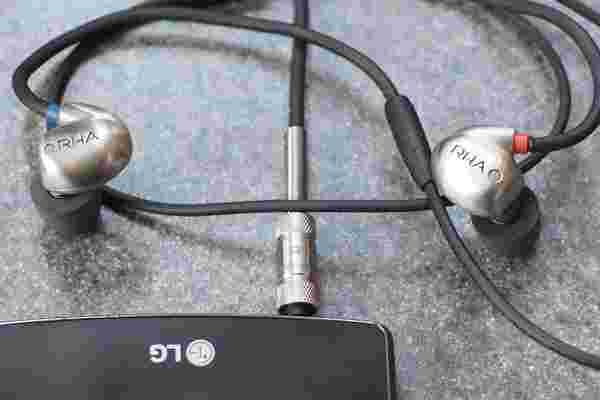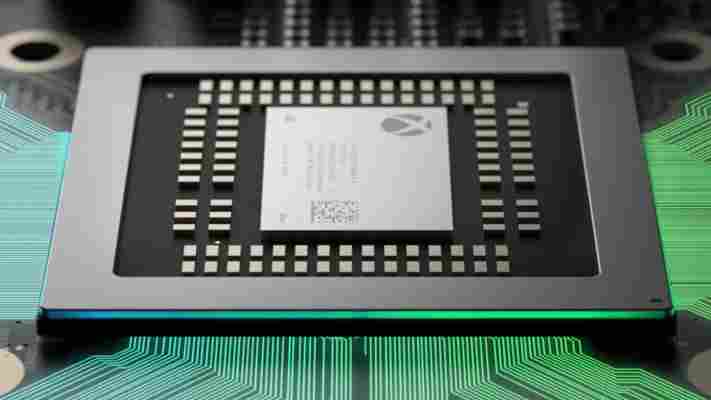About six months ago, I reviewed the T10i IEMs (in-ear monitors) by Reid Heath Acoustics , a scottish audio company. It was one of my favorite headphones, with top-notch build quality, a comfortable and elegant design and powerful sound.

Some people found the sound a bit too powerful though, with a strong bass that sometimes intruded on the rest of the sound frequency and bright treble that just wasn’t the cup of tea for some of the persnickety audiophiles paying $200 for the set. The headphone’s included tuning filters helped you modify the sound between bass, reference and treble settings, but the effect was relatively subtle.
Enter the new T20 , an upcoming $260 [Update: the release price will be $240 now] set that kicks RHA’s sound quality up another notch, due later this summer. While they look nearly identical to their predecessors, a newly designed ‘DualCoil’ driver is designed to provide a neutral sound by separating the high and low frequencies onto different mechanisms.
It delivers: The T20 competes with larger headphones as well as earphones.
If you’ve read our T10i review, then you already know most of the design story here. The headphones are beautifully crafted out of polished, injection molded steel, giving them an almost handmade look. Aesthetically, the only real difference is the use of a reassuringly thick black cable instead of a grey one, which I suppose somehow makes them look a little more serious-business.


The earphones are meant to be worn around the ear instead of the usual arrangement with the cable handing straight down. This has the dual benefit of helping the buds stay in your ear while exercising and reducing microphonics (the sound of the headphone cables hitting your body).
Like the T10i, the T20 have a unique moldable ear hook design, which you can adjust to conform to your own ears’ shape. As for the earpieces themselves, they are smooth and small enough that I had no issue sleeping with them on.
Notably, RHA released the T20 without a microphone to start. It’s likely the people spending their cash on headphones in this price range care more about the sound quality than convenience, and some audiophiles allege that integrated microphones degrade the cable’s sound signature. I personally missed the convenience of the microphone though, so I was happy to hear that a T20i model will be released in the future for a small premium (no specifics on the price yet).
As with their predecessors, isolation from the outside wold is excellent. There’s no fancy noise cancellation circuitry, but the metal housings are able to block outside noise well, especially using the included foam tips. It’s comparable to larger headphones using active noise cancelling such as some Beats models and the Bose QC25 .
Speaking of tips, you’ll be more than covered by the set included in the box. You get two sets of small, medium and large sizes, two sizes of double flanged tips, and two pairs of the aforementioned foam ones. As always with in-ear headphones, its worth experimenting with different configurations to see what best suits your tastes. In my case, it was the foam tips.
You also get the T series’ trademark tuning filters, again in bass, ‘reference,’ and treble varieties (more on this later).
Both the tips and filters come with their own machined steel holsters – a nice touch – as well as an elegant leather carrying case for all the items so you don’t damage the headphones or lose any of the accessories.
I do still wish the cables were detachable – the more expensive headphones are, the more silly this omission is – but again, RHA has a virtually unmatched three-year warranty, so it largely balances out.
Let’s first discuss those sound filters. The effect is subtle, but they definitely work to nudge sound slightly towards your preferences. Unlike with the T10i, this time I think the reference filters are probably the best option for most people, although I still personally gravitate to the brighter treble sound.
Furthermore, the bass tips are legitimately useful this time around, increasing the physicality of low notes by a substantial amount without being overwhelming. Because the default tuning is much more balanced this time around, the filters end up being more effective. As a note, most of my listening happened using the middle-ground reference filters.
Starting on the low end, the most noticeable characteristic is the relatively tame midbass. This part of the sound spectrum is very often overemphasized on headphones aimed at the masses – including previous RHA headphones – as it’s an easy way to add a fun “thump” to pop and hip hop. Unfortunately, it also has the effect of distorting virtually everything else, so it’s refreshing to hear that’s not the case here.
The T20 instead shows its low-end chops by providing a deep and powerful rumble on the sub-bass, helping the headphones have more visceral rumble on church organs and a more realistic kick to its drums on tracks like Paramore’s Ain’t it Fun .
The refined laid-back mid-bass allows the midrange – where vocals and most instruments live – to shine. There’s virtually no discernible bloat on voices, which is an impressive feat for sealed in ear monitors.
I’m perhaps most impressed by the treble, which addresses the sometimes harsh sound on the T10i. Here it manages to always be prominent without ever being grating. It extends high enough to give cymbals the proper sparkle in jazz tracks like Gretchen Parlato’s Weak , but I caught no hint of sibilance (an annoying hissy characteristic around the letter ‘s’ and certain instruments) either.
The balanced frequency response make the T20 something of a genre master – there wasn’t a single type of music I thought sounded poor. The DualCoil drivers use separate parts of the speaker diaphragm to push out low and high tunes, and it shows how separate lower sounds are kept from the higher notes.
This also aids in giving the T20 a realistic amount of instrument separation. I’ve heard a wider soundstage (how far from your head instruments sound) on some earphones in the price range before, but you can still hear separate instruments clearly in orchestral tracks, and there’s a surprising physical depth to the sound.
On the whole I’d still describe the T20 as being a bit more bassy than what audiophiles may consider neutral, but any less and you’d miss out on a lot of the fun sound in more mainstream music.
Conclusion
Let’s be clear: the T20 are aimed at people who care about their sound quality above anything else. Few companies would consider releasing mainstream IEMs without a microphone in 2015, so RHA is making a statement that sound quality is paramount with the T20.
That’s also evident with the price. At $240 (and likely more if you opt for the upcoming microphone-enabled T20i) they’re not exactly an impulse purchase, though in the world of hi-fi, few things are. If this is your first foray into buying a decent set of headphones, I’d point you to RHA’s MA750i, which are an excellent value at a more accessible $129.
Still, while mainstream consumers may not often consider earphones to be in the same league as larger, over the ear headphones, the T20 can easily compete with large cans like the audiophile-approved Sennheiser Momentum 2.0 , which retail for $349.
They T20 fix little that was wrong with the T10i. While audio quality in this price range is inevitably subject, I have no hesitation to recommend the T20 if you can afford them. It hits all the right notes: neutral sound, looks, comfort, durability, accessories, warranty and customizability.
➤ RHA T20
Microsoft releases Xbox Project Scorpio specs and it’s the most powerful console ever
Just as promised, Eurogamer has revealed the specs for Microsoft’s upcoming ‘Project Scorpio’ successor to the Xbox One this morning. The specs are straight from Microsoft, so they are official, and presumably final.

Needless to say, the console is a beast.
Many of the specs we’ve seen thrown around before were confirmed. The console achieved the promised six teraflops of performance using a custom eight-core processor clocked at 2.3 GHz – about 30 percent faster than the one on the Xbox One, and better at handling multitasking.
It’s not a crazy leap in proecessor technology, but that’s in part because Microsoft is demanding Project Scorpio be compatible with all current Xbox One games and that all games designed for Project Scorpio era run on the original Xbox One as well. Project Scorpio isn’t as much a new console generation as an incredibly powerful Xbox One.
But it’s the GPU that’s the real improvement – it’s about 4.6 times more powerful than the Xbox Ones. The 12 GB of ultra-fast GDDR5 RAM (8GB reserved for games), meanwhile, will help a great deal on loading those pesky 4K textures.
And yes, all those specs make it a fair bit more powerful than the PS4 Pro. While that console isn’t quite able to play every PS4 game at 4K, Project Scorpio can theoretically handle pretty much any current Xbox One title at 4K with room to spare. Eurogamer had this to say about a tech demo based on Forza Motosport 6 :
That means developers will not just be able to boost the resolution, but add additional effects and such as well. And even if you don’t have a 4K TV, Microsoft will include options to make your games look better, whether by boosting performance or smoothing out jagged edges.
That said, we hardly have any information about how it looks yet, but it will “pleasantly surprise” us, according to Eurogamer . The most we know is that like the Xbox One S, it has an integrated power brick, and that the selection of ports is pretty much identical.
The specs and all are nice from a graphics perspective, but there’s more to Project Scorpio than that. The PS4 has been winning this console generation so far in part because it’s easier to develop for multi-platform games. With Project Scorpio, Microsoft is hoping to win developers back, including a number of toolsets that should make it easier to create games for.
This is particularly important because, again, Project Scorpio is not a next generation console, at least not in the traditional sense, even though the power upgrade is on a similar-ish scale. When developing a next-gen console, companies normally incorporate some new technology that breaks compatibility with the previous generation, and makes developers have to relearn everything. Not so with Project Scorpio; Microsoft simply gave developers a more powerful Xbox One to play with and optimize.
No, we don’t have a price, release date (it’s coming in the fall), or even a final name – Microsoft has to leave some things for E3. Still, definitely head on over to Eurogamer if you want a more in-depth breakdown and analysis of the specs – the site published five articles on the console this morning.
HTC teases its new Desire phone launch next week
Update: Sorry guys, we derped big time. This is almost certainly the HTC Desire 10, and not the new Pixel.

Here’s a post by leaker Evan Blass from nearly a month ago. This is probably what we’re getting:
What follows is the original post. Shame.
HTC might have just teased the new Nexus Pixel phone. And it may be coming as soon as next week.
The company sent out the following tweet:
It also sent out the following invite:
If you haven’t heard, rumors currently suggest that Google is nixing the Nexus phone series in favor for the ‘Pixel’ name. It would continue its system of partnering with Android manufacturers to create the device, but the new Pixel devices would deviate from the old stock Android approach of Nexus devices with some proprietary features.
There are a few odd notes here though. First of all, Google normally teases and announces its flagship Android devices, even though they’re built by third party partners. It’s possible HTC is announcing a regular device of its own.
Still, that seems very unlikely. The timing would be odd for HTC, given this is normally around when Nexus devices are announced, and that HTC is almost certainly the company building the new Google devices. The fingerprint sensor’s location teased also deviates from the usual front location on HTC phones.
So as far as we can tell, we’ll finally be getting official word on Google’s latest devices next week.
